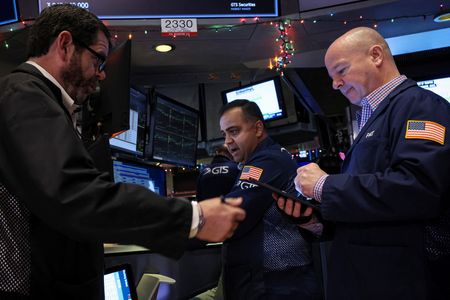It’s another downtrend session for the stock market in an overall disappointing December. The initial move lower right out of the gate broke the S&P 500 close to the 3,800 level, but the main indices have recovered from those levels and settled into a narrow trading range.
Many stocks that drove yesterday’s gain are exhibiting sizable losses today, albeit amid thinner trading conditions. That would be the mega-cap stocks, all of which aren’t so “mega” any more given the massive loss in market capitalization they have suffered this year. Apple (AAPL), Amazon.com (AMZN), and Meta Platforms (META) are among the more influential losers for the group.
The Vanguard Mega Cap Growth ETF (MGK) is down 0.8% today and 34.4% for the year. The Invesco S&P 500 Equal Weight ETF (RSP), meanwhile, sports a 0.6% loss.
Ten of the 11 S&P 500 sectors trade in the red with losses ranging from 0.4% (financials) to 1.0% (materials). The communication services (-0.9%), consumer discretionary (-0.8%), and information technology (-0.8%) sectors are also notable drags on the broader market, which have been among the biggest losers in 2022.
The lone sector trading up is energy (+0.5%), boosted by rising oil prices. WTI crude oil futures are up 1.0% to $79.17/bbl.
Treasuries are weaker today, too, which is also in keeping with how most of 2022 has gone for that market. The 2-yr note yield is up five basis points to 4.42%, having begun the year at 0.73%, and the 10-yr note yield is up four basis points to 3.88%, having begun the year at 1.51%.
The rise in yields is another headwind for the stock market on this last trading day of the year, and particularly for growth stocks, keeping in-line with the pattern all year long. The Russell Growth Index is down 0.8% versus a 0.5% loss in the Russell 3000 Value Index.
Today’s economic data was limited to the December Chicago PMI, which checked in at 44.9 (consensus 40.0) versus 37.2 in November. The report was better than expected, although a number below 50.0 still connotes a contraction in general business conditions for the manufacturing sector in the Chicago Fed region.





